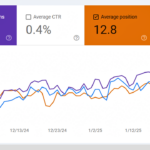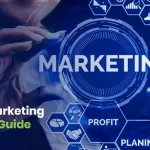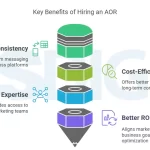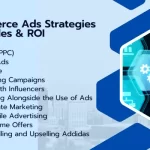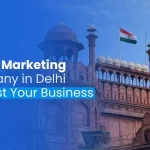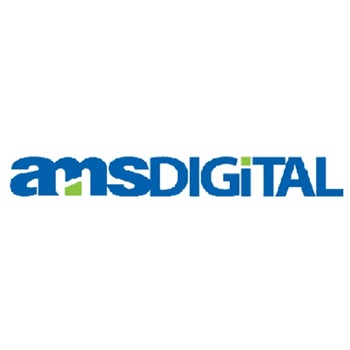In a VUCA era, the digital marketplace is continuously evolving. Organisations need to adopt robust marketing campaigns that require more than just advertising. The consumer behaviour is changing with advancements in technology, and so the businesses need to adopt holistic strategies to stay ahead. In this article, we will cover a few tips for crafting a successful digital marketing campaign now and beyond.
25+ Tips for a Successful Digital Marketing Campaign in 2024
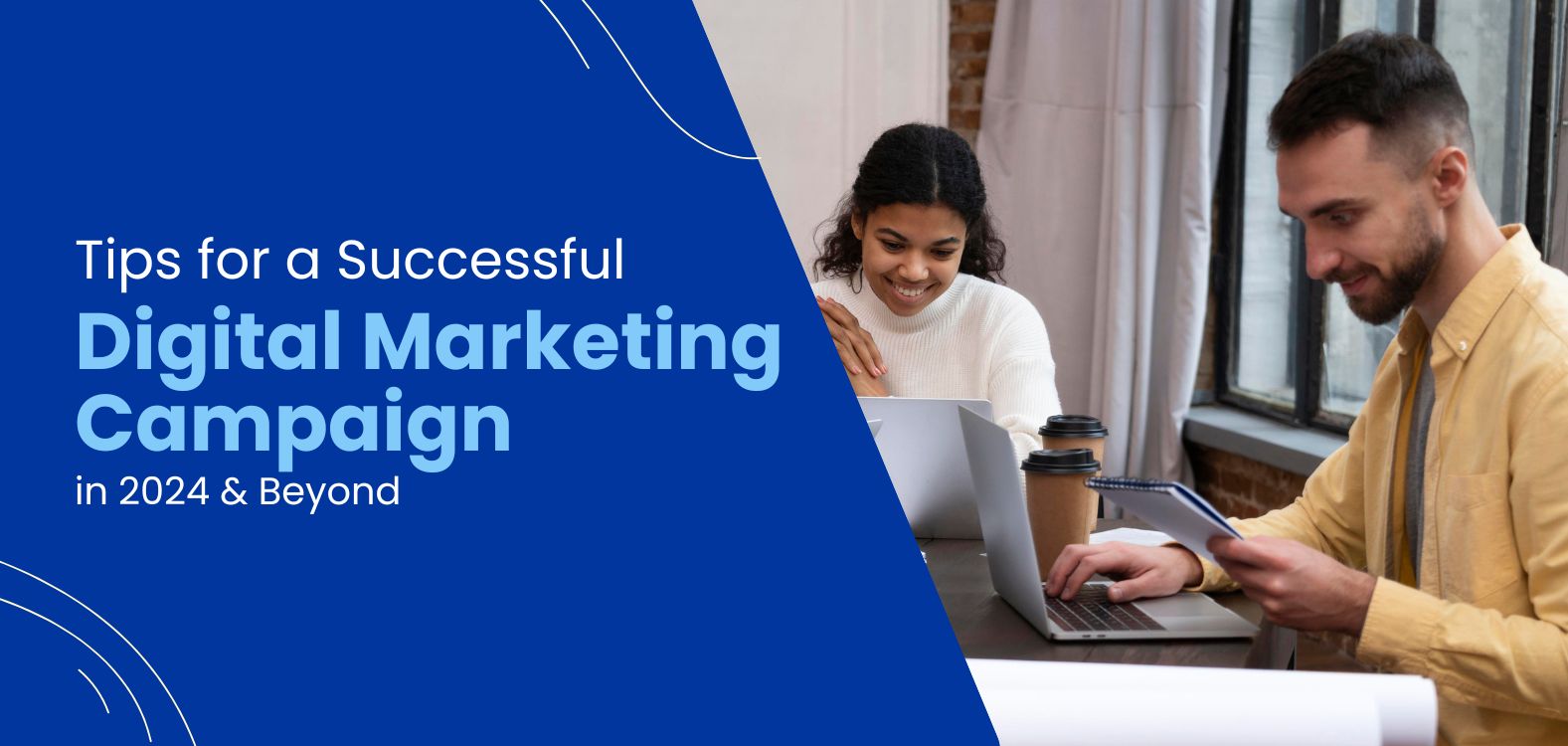
1. Clear Understanding of the Target Audience
Business team has to understand the importance of the target audience. They can identify demographics, preferences, and behaviour patterns to create their TA. This’ll be used in the designing and implementing the personalised and effective marketing messages.
2. Setting Clear Goals
Be Specific. Define clear objectives for the marketing campaign. It could be increasing brand awareness, generating leads, or driving sales, setting specific goals will help guide your strategy. Also, establish what are the key performance indicators (KPIs) to measure the success of the campaign.
3. Creating Content
Create good, relevant, easy to understand simple content that addresses the audience. It should be informative, engaging, and relevant to them. It could be blog posts and videos to infographics and podcasts, diversify your content formats to cater to different audience preferences.
4. Optimise For Search Engines
Next, the marketing team has to implement search engine optimization (SEO) strategies. It’ll improve its online visibility.
Do thorough keyword research to identify relevant terms and phrases that your audience is searching for. Optimise website and content with the keywords that matter, to rank higher in search engine results pages (SERPs). It’ll drive organic traffic.
5. Use Social Media
These platforms provide business to connect with their wide audience, some of them could be their future prospects. Businesses should choose the platforms based on how their target audience spends their time online. Connect with by sharing valuable messages, responding to their thoughts/feedback, and building a healthy conversation. These media also build brand loyalty.
6. Email Marketing
It is one of the powerful tools for nurturing leads and driving conversions. Team should build an email list of subscribers who have opted in to receive communications. Use personalized and targeted email campaigns for your audience.
7. Invest in Paid Advertising
It provides an extra boost to your marketing efforts. The different ad formats, such as pay-per-click (PPC) ads and display ads help organisations to reach their target audience. Start by setting clear budgets and monitor the return on investment (ROI) of ad campaigns.
8. Embrace Emerging Technologies
Technologies like Artificial intelligence (AI) and machine learning can help them optimise targeting and personalization, while virtual and augmented reality experiences can provide immersive brand interactions with its audience
9. Analyze and Adjust Strategies
Monitor campaigns regularly, look at the key metrics such as website traffic, conversion rates, and engagement levels that will help the business team to identify areas for improvement, and adjust accordingly to achieve your desired results.
10. Stay Agile and Adaptable
Stay informed about new industry trends and changes in consumer behaviour. Adapt those and try to experiment and innovate to do what competitors are not doing.
11. Building Strong Relationships
Listen to their feedback, address their needs wherever possible, and address their concerns. Provide value through personalised interactions. Use influencers as on when required who can help amplify those messages and reach new audiences.
12. Be Mobile Optimised
Speak to your tech team, and ensure that the website and digital assets are mobile-friendly, with responsive design and fast loading times. Make sure that business should provide a seamless user experience across all devices to maximize engagement.
13. Prioritise User Experience
Prioritise the ease of use for your audience from the website navigation to ecommerce checkout. The design should address the common pain points and solutions you provide to enhance your audience’s life. It enhances customer satisfaction and builds stronger loyalty.
14. Use of AI-Powered Solutions for Enhanced Targeting
Use artificial intelligence (AI) for better targeting and more personalised marketing campaigns. AI-based tools help marketing teams of businesses to analyze vast amounts of data that help them gain valuable insights about consumer behaviour to create tailored strategies. AI-powered solutions, also help them to optimise ad targeting, refine customer segmentation, and deliver relevant content to resonate with their target audience.
15. Create Compelling Visual Content for Engagement
Add appealing content into the marketing campaigns. It can significantly enhance brand visibility and message retention. You can try from eye-catching infographics to immersive video content to capture the audience’s attention and their engagement. It also helps the brand to convey their story more effectively to develop meaningful connections with its audience.
16. Power of Social Media Influencers
In many instances, it is observed that social media Influencers help brands to expand their reach. It has also driven conversions. Create a plan to include influencers in your marketing budget. Make a list of them with whom you can collaborate. Make sure they align with your brand values and connect with your target audience. By using their credibility and influence, brands can amplify their stories, build connections, and grow their loyal community of followers.
17. Optimise for Voice Search and Conversational AI
Have you included Voice search in your current seo strategy? With voice-activated devices and virtual assistants optimising for voice search is a must for businesses. Their marketing team modifies their SEO strategies to accommodate the growing prevalence of voice search queries and conversational AI interfaces. Use long-tail keywords, natural language phrases, and schema markup, it can enhance their visibility in voice search results. It also delivers seamless user experiences across all devices.
18. Use Augmented Reality (AR) and Virtual Reality (VR)
Augmented reality (AR) and virtual reality (VR) technologies offer businesses opportunities to build engagement and interaction with its target audience. It may not be beneficial for a few industries, but it is also good to have new technologies to give experiences to your audiences. These technologies drive your brand’s storytelling. It also differentiates your brand from competitors. Use this to offer virtual product demos or create interactive branded AR filters, these technologies will certainly grow your digital marketing efforts.
19. Leverage User-Generated Content for Authenticity
We live in a user-generated content (UGC) world. It’s a powerful tool for building trust and credibility with consumers. Encourage your audience to create and share content related to your brand. Such activity grows a sense of community and authenticity. When your customers showcase real-life testimonials, share reviews, and post their generated photos or videos, the audience marketers connect with your brand and it cultivates more genuine conversations.
20. Optimise for Featured Snippets and Rich Snippets
Because of Google’s focus on giving users rapid answers to their queries, business’s marketing team should optimise for featured snippets and rich snippets. It’ll improve your chances of obtaining desired featured snippet positions by organising information in a clear, succinct manner and offering brief responses to frequently requested concerns of your audiences. Adding schema markup also improves the search results’ visibility and appeal, increasing organic traffic and click-through rates.
21. Investing in Programmatic Advertising for Precision Targeting
Programmatic advertising is a new avenue for audience engagement. One should try it. It’s helping businesses to reach real-time consumers. The AI algorithms for precision targeting capabilities make it highly efficient. Businesses can reach their target audience with pinpoint accuracy, to deliver personalised ads at the right time and on the right channels. Invest in programmatic advertising will maximize ROI, streamline and campaign management.
22. Personalized Customer Experiences
Who doesn’t want personalised experiences that are catered to as per their individual preferences and needs?
You can do this by gathering data based knowledge and by using marketing automation tools, you can create hyper-personalised journeys for your customer and their target audience on a deeper level. The key of driving customer engagement that enhances loyalty is to deliver relevant and timely messaging at every touchpoint from personalised email campaigns to dynamic website content and tailored recommendations.
23. Mobile-First Optimization for All User Experiences
The majority of online traffic is on mobile. Priorities mobile-first user experiences for your customers. You should optimize your digital assets by making web design responsive, using accelerated mobile pages (AMP) and mobile-friendly content formats. It has been observed that a fast-load website and intuitive mobile experiences make its customers more satisfied and brings positive ROI for its brands.
24. Navigating the Evolving Regulatory Landscape
The implementation of GDPR and CCPA regulations to emerging privacy laws and industry standards, staying compliant is non-negotiable. Adopt transparency, consent, and data security in your business practices. These practices build trust with your customer, it also mitigate the risk of regulatory penalties.
25. Measure and Analyze Key Performance Indicators (KPIs)
Measure and analyse your key performance indicators (KPIs) to understand the effectiveness of digital marketing campaigns. The KPI’s are website traffic and conversion rates, and customer lifetime value. It may also include social media engagement depending upon your business objectives. It helps to assess ROI, identify areas for improvement, and make data-driven decisions. Refine your strategies and drive growth by using such analytics tools and conducting regular performance evaluations,
26. Adapting to Emerging Technologies and Trends
Stay aware of new technologies and related trends. It helps you to keep updated on what’s news in the world. It’s also essential for maintaining a competitive edge. Whether you are using blockchain to enhance security and transparency, enabling chatbots for customer service automation, or planning 360-degree video and live streaming, you must be adaptable in this VUCA market.
27. Build Cross-Channel Integration and Collaboration
Cross-channel integration and collaboration is key to delivering cohesive and consistent brand experiences across all touchpoints. By breaking down silos and aligning marketing efforts across channels such as social media, email, search, and offline channels, marketers can amplify their message and enhance brand visibility. Embracing a holistic approach to marketing enables marketers to engage customers at every stage of the buyer’s journey and drive meaningful interactions.
Conclusion
Crafting a successful digital marketing campaign requires a combination of strategy, creativity, and adaptability. Know your target audience, set clear goals, utilize right tactics and technologies, and achieve measurable results to drive business growth now and beyond.
The digital marketing ecosystem will evolve at a rapid pace as we keep moving, presenting both challenges and opportunities for businesses to grow. Adapt new strategies, stay informed about emerging trends, and position yourself in this dynamic market and ever-changing environment. Use the power of AI, and by prioritising personalization and compliance, the key to a successful marketing & advertising campaign lies in creativity & innovation, and a never-ending commitment to deliver a valuable experience to your audience.
Contact us Now to schedule a meeting about your next project or write to us at sales@amsdigital.in with your detailed scope of work.




